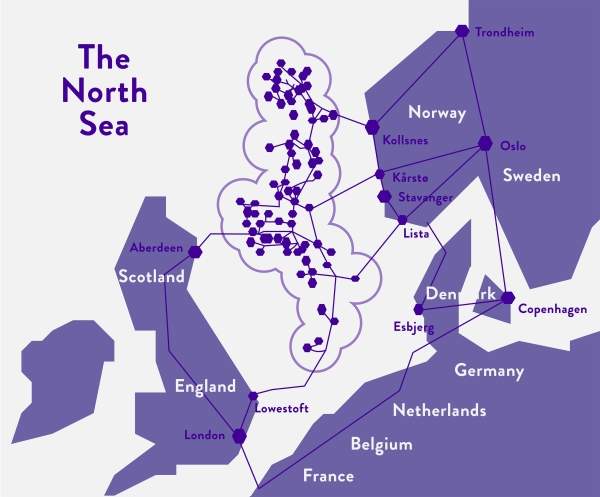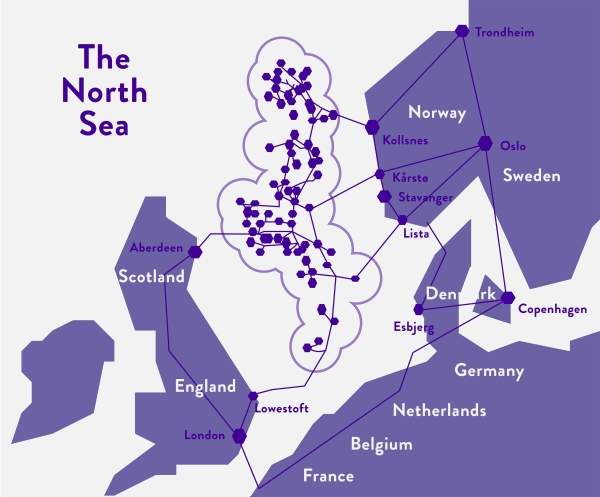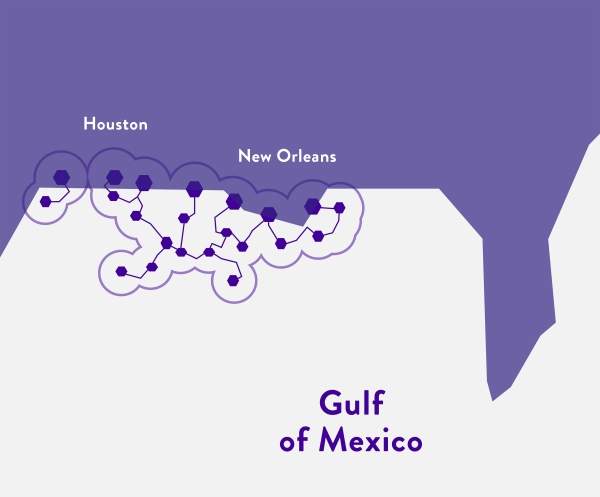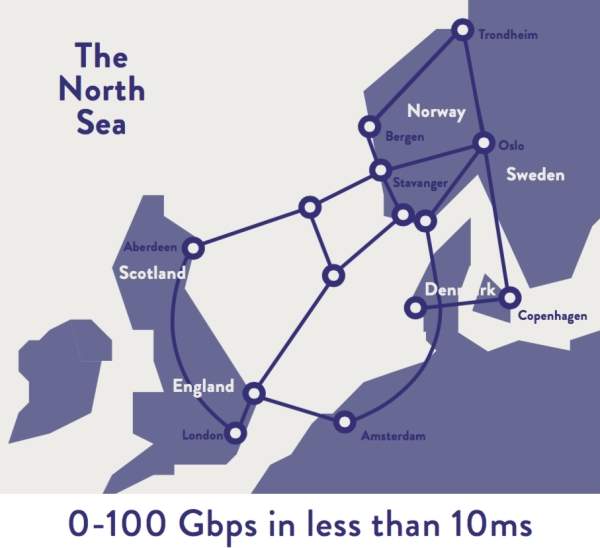
Tampnet operates the world’s largest offshore high-capacity communications network in the North Sea and the Gulf of Mexico, serving more than 240 oil and gas platforms, floating production storage and offloading units (FPSOs), exploration rigs and vessels.
Subsea fibre-optic infrastructure for offshore facilities
Tampnet currently owns and operates an infrastructure based on 2,500km of subsea fibre.
Fibre-optic communications revolutionise operations offshore. High-capacity broadband access enables faster and improved decision-making, increased efficiency and significant cost savings.
Compared with traditional satellite communication, subsea fibre cables have virtually no delay. This allows for instant distribution of critical data from offshore operations, and takes video conferencing to the next level.
With real-time communication, clients benefit from their core expertise while keeping them onshore, available for multiple operations.
Wireless 4G network services for reliable data connection
Access to the Tampnet 4G LTE network has traditionally been reserved for fixed, producing assets and drilling rigs on long-term contracts.
Even though vessels and rigs have been operating near the infrastructure, they have not been able to connect to the network. Up to this point, satellite has been the primary option. This is flexible, but high in latency (600ms RTD) and limited in bandwidth.
In order to extend the reach of its wireless services and network to include rigs and vessels in motion, Tampnet has introduced an offshore 4G network based on mobile technology. This service will give mobile and rotating rigs and vessels reliable low-latency communication links, even in rough weather.
With the first offshore 4G base station installed in 2013, Tampnet is an experienced communications provider using this technology for critical operations.
Point-to-point radio connectivity
Tampnet has connected a large number of fixed offshore platforms via radio link, and currently offers fully managed and redundant radio link connectivity through approximately 60 radio link hops, several of which are part of its core network.
The use of point-to-point radio link connectivity is a well-proven technology commonly used by the telecom operators worldwide. This is effective in areas where fibre cabling is complicated and costly. The technology is robust, well-proven and offers high-capacity, low-latency and high-reliability.
Layer-2 SDH and ethernet connection services
Tampnet offers Layer-2 services (SDH and ethernet) with capacities ranging from 2Mb to 100GB between Oslo, Stavanger, Aberdeen, London, Copenhagen, Bergen and Trondheim. As an example, round-trip delay between Oslo and London is a mere 18ms.
Tampnet is increasingly carrying transit traffic between clients’ corporate offices located in the typical oil and gas cities around the North Sea. Aspects such as low-latency, high-reliability and diversity are important factors for its clients.
Although the company provides low-latency broadband services to the remote offshore assets and operations in the North Sea, its infrastructure offers by far the shortest route between Norway and the UK.
About Tampnet
Tampnet aims to connect offshore assets to redundant and reliable terrestrial networks with high-capacity and low-latency, enabling clients to improve the quality, health, safety, efficiency and welfare of offshore operations.
The company delivers high-quality and resilient managed services, and its 24/7 network operation centre is manned by experienced staff and offers active monitoring, trending, troubleshooting and dispatching of field engineers if needed. The infrastructure of the company’s network operation centre is built on the same resilience principles as its core offshore and onshore infrastructure.





